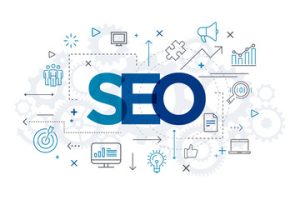Visibility drives opportunity in the digital world. SEO, or search engine optimization, is the invisible architecture that determines how information is found, consumed, and trusted online. It has evolved far beyond keyword stuffing and link schemes into a sophisticated strategy rooted in psychology, technology, and user experience. At its best, SEO is not just about ranking higher—it is about building authority, delivering relevance, and shaping digital ecosystems that work for both people and algorithms. Visit Website to learn more.

The earliest days of SEO were defined by simple mechanics. Search engines relied heavily on keywords and backlinks to determine rankings, and success often meant repeating phrases and collecting links indiscriminately. But as algorithms matured, they began to understand language context, search intent, and the quality of user interactions. This evolution shifted SEO from a purely technical task into a discipline that blends content strategy, design thinking, and behavioral science.
At the heart of modern SEO is user intent. Search engines no longer just match words—they try to solve problems and answer questions. That means successful optimization starts with understanding why someone is searching, not just what they are typing. Businesses that align their content with real human needs see more engagement, longer visits, and higher conversions because they deliver exactly what users are seeking.
The rise of semantic search further changed the game. Algorithms now interpret synonyms, context, and topic relationships, which means content must be natural, informative, and comprehensive. Creating pages around isolated keywords is no longer effective. Instead, successful SEO strategies focus on building topic authority and depth, answering every possible angle of a user’s query in one cohesive experience.
Technical SEO remains a vital foundation, but even it has expanded in scope. Page speed, mobile optimization, crawlability, and site structure all affect how search engines perceive and rank a site. These elements also influence how users experience it, creating a feedback loop where performance and usability directly impact visibility. In this way, SEO is not only about pleasing algorithms but also about enhancing human interaction.
Another significant development is the importance of search intent diversity. Not every query is transactional or navigational; many are informational, local, or exploratory. Understanding the intent behind different types of searches allows content creators to design pages that align with those needs. This nuanced approach builds trust and positions brands as authoritative sources long before a conversion occurs.
The influence of artificial intelligence on SEO cannot be overstated. Machine learning models analyze vast amounts of data to predict what users will find most relevant. As a result, strategies must adapt continuously to align with evolving patterns in behavior and preference. SEO is no longer static; it is a dynamic, iterative process driven by feedback loops between content, users, and algorithms.
Content quality has become the cornerstone of organic visibility. Algorithms increasingly reward pages that demonstrate expertise, authority, and trustworthiness, collectively known as E-A-T. This requires more than well-written text—it demands original insights, credible references, and a consistent publishing strategy. High-quality content is not just about ranking; it builds loyalty and positions a brand as a thought leader.
The integration of multimedia has expanded what SEO means. Video, images, and interactive tools are now essential components of search visibility. Search engines analyze visual elements, transcripts, and engagement signals to determine relevance. Optimizing beyond text ensures that a site captures attention across multiple content formats, enhancing both reach and retention.
Voice search has introduced new dynamics to keyword strategy. Spoken queries tend to be longer, more conversational, and context-specific. This shift emphasizes the importance of natural language optimization and FAQ-style content that mimics how people speak. As voice-enabled devices become more prevalent, SEO strategies must adapt to meet users where they are.
Local SEO is another area that has grown in significance. Search engines increasingly personalize results based on location, device, and search history. Businesses that optimize for local relevance capture more nearby traffic and improve their chances of appearing in map packs and localized results. This hyper-targeted approach reflects the growing demand for convenience and proximity in digital behavior.
Link building, once a numbers game, has become a matter of quality and context. Search engines now evaluate the authority, relevance, and diversity of linking domains. Genuine editorial links from reputable sources carry far more weight than mass-produced backlinks. This evolution has elevated link building from a transactional tactic to a strategic relationship-building effort.
Behavioral signals such as dwell time, bounce rate, and click-through rate are increasingly part of ranking decisions. These metrics reveal how users interact with content and whether it meets their expectations. Improving user engagement through intuitive design, clear structure, and compelling storytelling can significantly enhance SEO outcomes. Optimization, therefore, extends beyond discovery to include retention and satisfaction.
The boundaries between SEO and other digital disciplines have blurred. Social signals, paid campaigns, and brand visibility all indirectly influence organic performance. A cohesive digital strategy integrates SEO with content marketing, user experience design, and conversion optimization to create a unified online presence. This holistic approach reflects the reality that search visibility is shaped by multiple interconnected factors.
Structured data and schema markup represent another frontier in SEO innovation. By providing search engines with explicit information about a page’s content, businesses can enhance their visibility in rich snippets, knowledge panels, and other advanced search features. These enhancements improve click-through rates and provide users with immediate value before they even visit a site.
User experience design has become inseparable from SEO success. Factors such as intuitive navigation, clear calls to action, and minimal friction directly influence how search engines evaluate a site. A well-optimized page is not just discoverable; it is enjoyable and easy to use. As algorithms become more user-centric, this alignment between design and optimization will continue to deepen.
The future of SEO will likely be defined by predictive and personalized search. Algorithms will anticipate user needs before queries are typed, delivering tailored results based on context, preferences, and past behavior. This evolution will require strategies that are flexible, adaptive, and deeply attuned to audience insights. SEO professionals will need to think beyond keywords and craft experiences that anticipate intent.
Sustainability is another emerging consideration in SEO strategy. Sites with lighter code, efficient hosting, and environmentally responsible practices may eventually see ranking advantages as search engines prioritize eco-friendly performance. Optimization could soon extend beyond content and structure to include the carbon footprint of a website’s operation.
The ethical dimensions of SEO are also gaining attention. As algorithms become more influential in shaping information access, transparency and accountability are crucial. Ethical SEO prioritizes accurate information, respects user privacy, and avoids manipulative tactics that exploit vulnerabilities. This approach builds long-term credibility and aligns with the broader principles of responsible digital practice.
In many ways, SEO is no longer just a marketing tool—it is the language of the internet. It determines how knowledge is organized, how brands are discovered, and how trust is built online. Mastering it requires a deep understanding of human behavior, technological trends, and the evolving relationship between users and information.
Ultimately, the future of SEO is about more than search rankings. It is about creating meaningful digital experiences that connect people with the information, products, and services they need. It is about building ecosystems where relevance, authority, and trust converge to shape how the web is navigated. Beyond keywords and links, SEO is the invisible infrastructure of the digital age—a system that, when understood and respected, becomes a powerful engine for growth, visibility, and connection.

